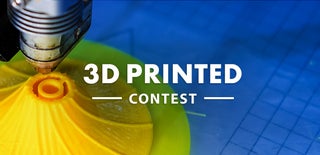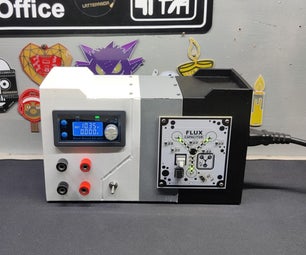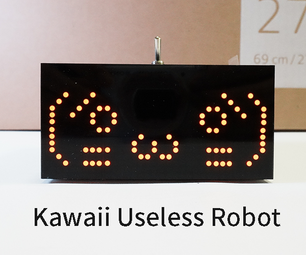Introduction: DIY Motorized Camera Slider From Four 3D Printed Parts
Hello makers, it's maker moekoe!
Today I wanna show you how to build a very useful linear camera slider based on a V-Slot/Openbuilds rail, Nema17 stepper motor and only four 3D printed parts.
A few days ago I decided to invest into a better camera for recording my Instagram and Youtube footages. That's the reason why I want to build some camera tools which makes my footages better and more interesting. First build of my 'how to get better videos' is this simple but very handy camera slider.
Step 1: Get Inspired!
First of all, go watch this video! It has all the informations about the build of the camera slider. Some additional informations, PCB and 3D files can be found here in this Instructable.
Step 2: Parts for the Camera Slider!
As I am using the Openbuilds V-Slot system you won't use plenty of parts to build your own slider.
- The four 3D printed parts (see next section)
- 4x V-Slot rail bearings
- 1x V-Slot linear rail 2060
- 1x Nema17 stepper motor
- 1x GT2 pulley 20 teeth
- 1x GT2 belt (length: ~ 2 x rail length * 1,3)
- 4x M3 10mm screws
- 4x M3 washers
- 4x M5 threaded inserts *
- 2x M3 threaded inserts *
- 4x M5 40mm screws
- 2x M3 15mm screws
- 12x M5 washers
- 1x 1/4" screw *
- 1x 1/4" ball joint for cameras *
Of course, the length of the rail determines the length of the slider. The GT2 belt should be double the length of the slider plus 30% on top for the pivot points and the belt tensioner.
You can use whatever stepper driver you want, but I can recommend the TMC2130 (or 2208, ...) because it comes with an easy SPI interface, 1/256 microstepping interpolation and silent smoothing operations. It is the best controller for this case. If you want to build the same controller like me, you will additionally need these parts:
Step 3: The Slider!
Basic concept of this slider is the Openbuilds system. I have chosen a one meter Openbuilds rail as a base and my slider uses four of the v-slotted rail bearings. The slider is not limited to the length, you can make it even longer.
The 3D printed parts are designed for the use of a three or four wheeled slider. I still don't figured out what is the best solution here. Make sure not to waste your threaded inserts with putting them in all six holes and only use three or four inserts at the correct positions.
Step 4: The Controller Stack!
The only electrical part of the slider is the stepper motor, so you are able to run the slider without the need of this controller. But it is very handy and comes with several possibilities in a small case. Additionally you can use my 3D printed 12V BOSCH battery mount to drive the whole system on the go. You will find it here.
Currently the controller is programmed to adjust following settings:
- Two modes:
- Time Mode: Drive the desired length in the specified time
- Length Mode: Drive the desired length at the specified speed
- Time [s] (Time Mode)
- Length [cm] - the length the slider will move (max. rail length - 10cm, because the slider needs some space as well)
- Speed [cm/s] (Length Mode)
- Acceleration [cm/s^2]
- Direction - the moving direction of the slider (M: Motor side, W: Wheel side)
- Delay [ms] - (for Direction Mode M<->W, where the slider alternates from one to another point)
The needed parts are specified a few steps above. Like shown in the video, I have soldered my PCBs at home with my homemade soldering iron from an old clothes flat iron. For further information to the iron you can check out this post.
And the code, well, just 750 lines of code :D The UI is written by myself, without the use of any library except the Adafruit GFX lib. If you have questions then just let me know.
Once a day I will create a Blynk interface for the controller as well. But that is not the most important part here.
Step 5: Go Build Your Own!
Next step of this project is to build a rotating axis on the slider itself, so that it can track points and objects.
Hope that you enjoyed reading this instructable and may found a way to build your own slider!
Feel free to check out my Instagram, Website and Youtube channel for more informations about the slider and other awesome projects! If you have questions or something is missing then please let me know in the comments below!
Have fun creating! :)

Participated in the
3D Printed Contest



















